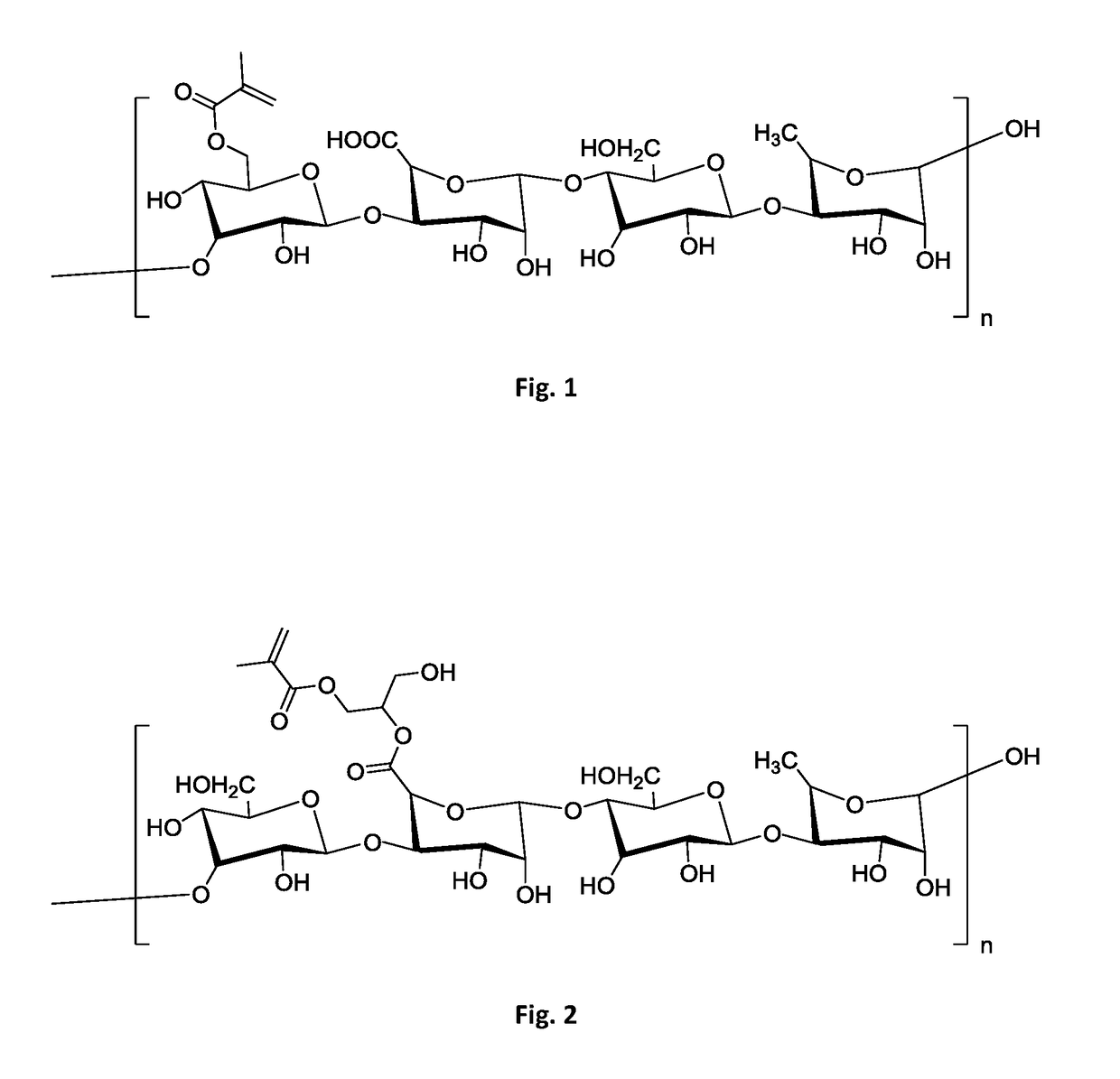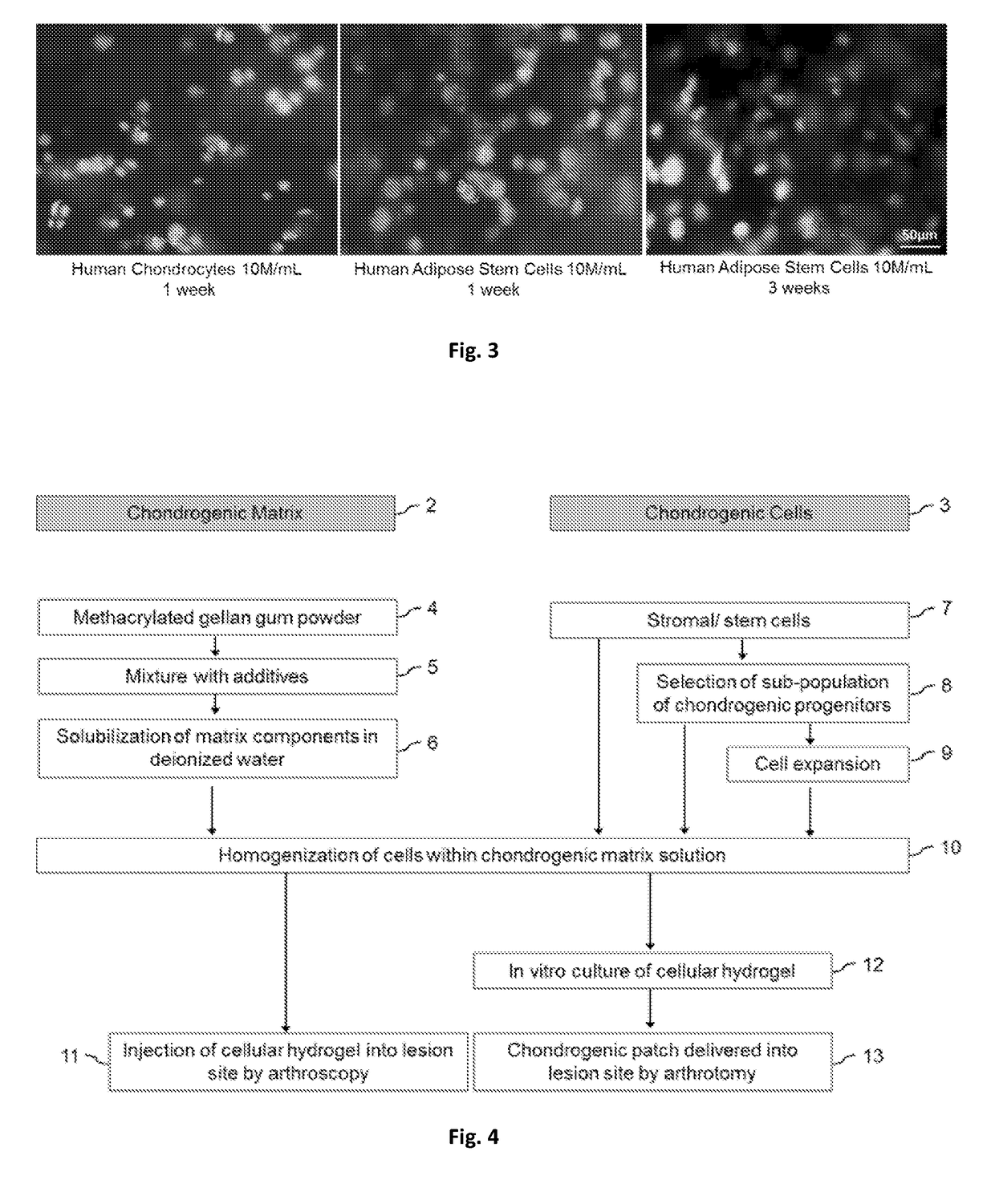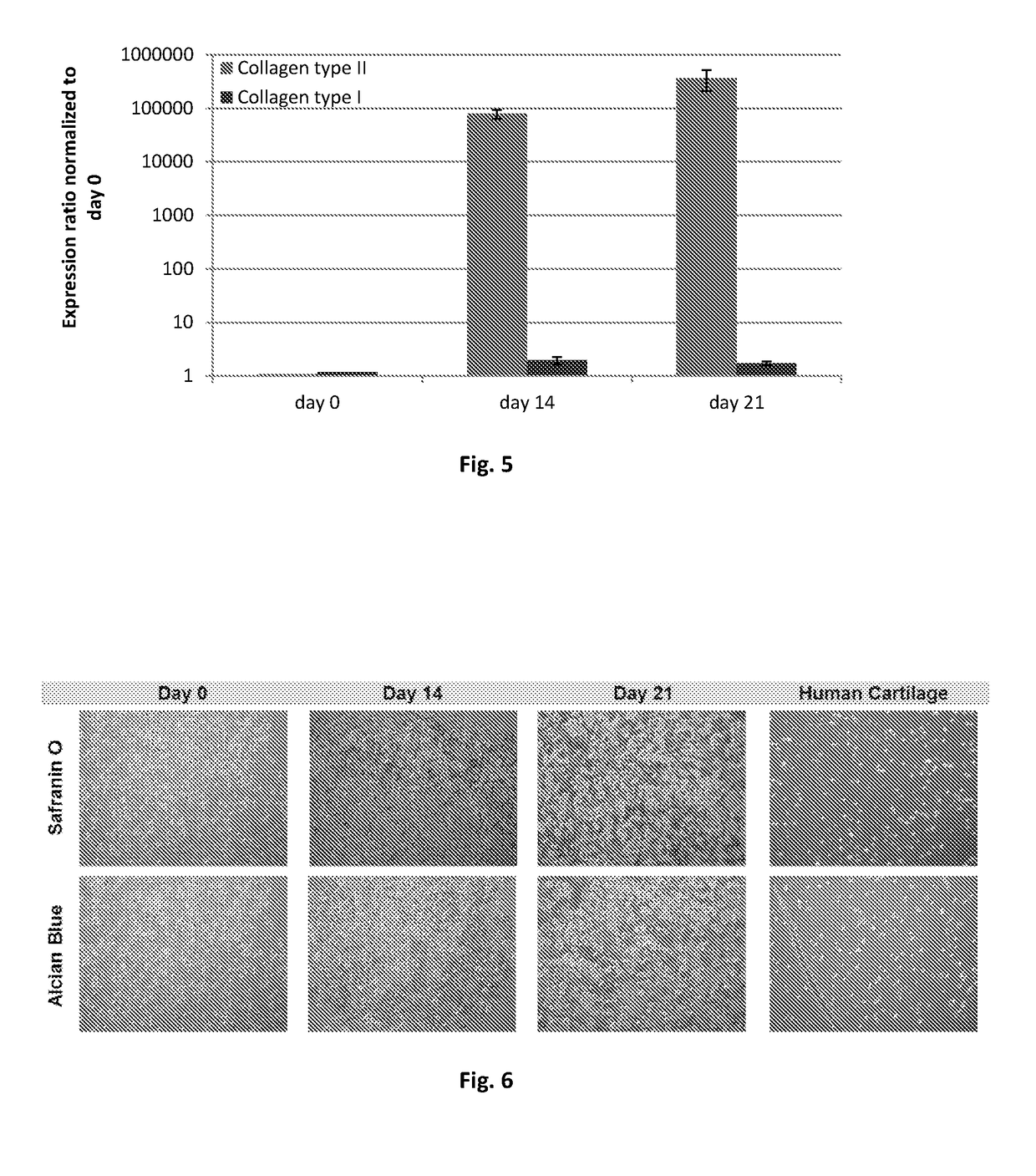Products for repairing cartilage lesions, method of preparation and uses thereof
a cartilage lesions and product technology, applied in the field of cartilage lesions, can solve the problems of limited repair capabilities, increased risk of traumatic lesions of cartilage tissue, and well known cartilage tissu
- Summary
- Abstract
- Description
- Claims
- Application Information
AI Technical Summary
Benefits of technology
Problems solved by technology
Method used
Image
Examples
example 1
on of Tissue Engineering Product Composition for Cartilage Repair
[0104]An aseptic environment was set to prepare the chondrogenic composition. Chondrogenic matrix was prepared by sourcing 20 mg of methacrylated gellan gum powder with a methacrylation degree between 1.5 and 5%. Quality control ensured absence of any microbial contamination, as well as ensuring levels of mycoplasma and endotoxins below limits acceptable for therapeutic use. An aqueous solution was prepared by homogenizing said powder with sterile deionized water, yielding a 2% w / V solution. Homogenization was performed at 37° C. with mild agitation. Chondrogenic cells were prepared by sourcing 10 million human stromal / stem cells, at passage 1-2, from a master cell bank. Said human stromal / stem cells were isolated in xeno-free conditions from adipose tissue of a qualified donor. The donor sample was qualified as for absence of bloodborne pathogens and absence of known medical conditions. Cells were qualified for presen...
example 2
Development of Hyaline Cartilage by the Use of Disclosed Composition
[0105]Healthy hyaline articular cartilage is evaluated by the composition of its extracellular matrix, which includes mainly collagen type II and glycosaminoglycans. When fibrous cartilage is formed, the composition of extracellular matrix shifts, giving rise to molecules such as collagen type I that render less elasticity to the tissue, thereby becoming less capable to withstand mechanical demands of the joint. This procedure may be applied to the evaluation of any composition of this invention.
Materials and Methods
[0106]The cartilage repair composition, as described in example 1, was cultured in vitro for 21 days, exposed to chondrogenic growth factors. In vitro-developed grafts were collected for histological assessment according to standard procedures. Safranin O and alcian blue stainings were performed to detected cartilage glycosaminoglycans. Other grafts were used for quantitative determination collagen type ...
example 3
epair of Rabbit Hyaline Cartilage Lesion by the Use of Disclosed Composition
[0111]The performance and efficacy of disclosed composition and method for treatment of focal cartilage lesions was assessed in a rabbit model.
Materials and Methods
[0112]A rabbit model was used to test the efficacy of the disclosed composition and method on the repair of cartilage lesions. A focal articular cartilage lesion was induced to the animal's knee by the use of a biopsy punch and curette. Lesions were immediately treated either with the preferred embodiment described in example 1, or adopting a current standard of care surgical method—microfracture. As control, lesions were left untreated. An 8 week repair period was allowed, after which articular cartilage samples were harvested for histological analysis. Safranin O / fast green staining was performed to identify status of lesion repair.
Results
[0113]FIG. 7 represents microscopic images of rabbit articular cartilage sections stained with safranin O / fa...
PUM
| Property | Measurement | Unit |
|---|---|---|
| Fraction | aaaaa | aaaaa |
| Fraction | aaaaa | aaaaa |
| Fraction | aaaaa | aaaaa |
Abstract
Description
Claims
Application Information
 Login to View More
Login to View More - R&D
- Intellectual Property
- Life Sciences
- Materials
- Tech Scout
- Unparalleled Data Quality
- Higher Quality Content
- 60% Fewer Hallucinations
Browse by: Latest US Patents, China's latest patents, Technical Efficacy Thesaurus, Application Domain, Technology Topic, Popular Technical Reports.
© 2025 PatSnap. All rights reserved.Legal|Privacy policy|Modern Slavery Act Transparency Statement|Sitemap|About US| Contact US: help@patsnap.com



